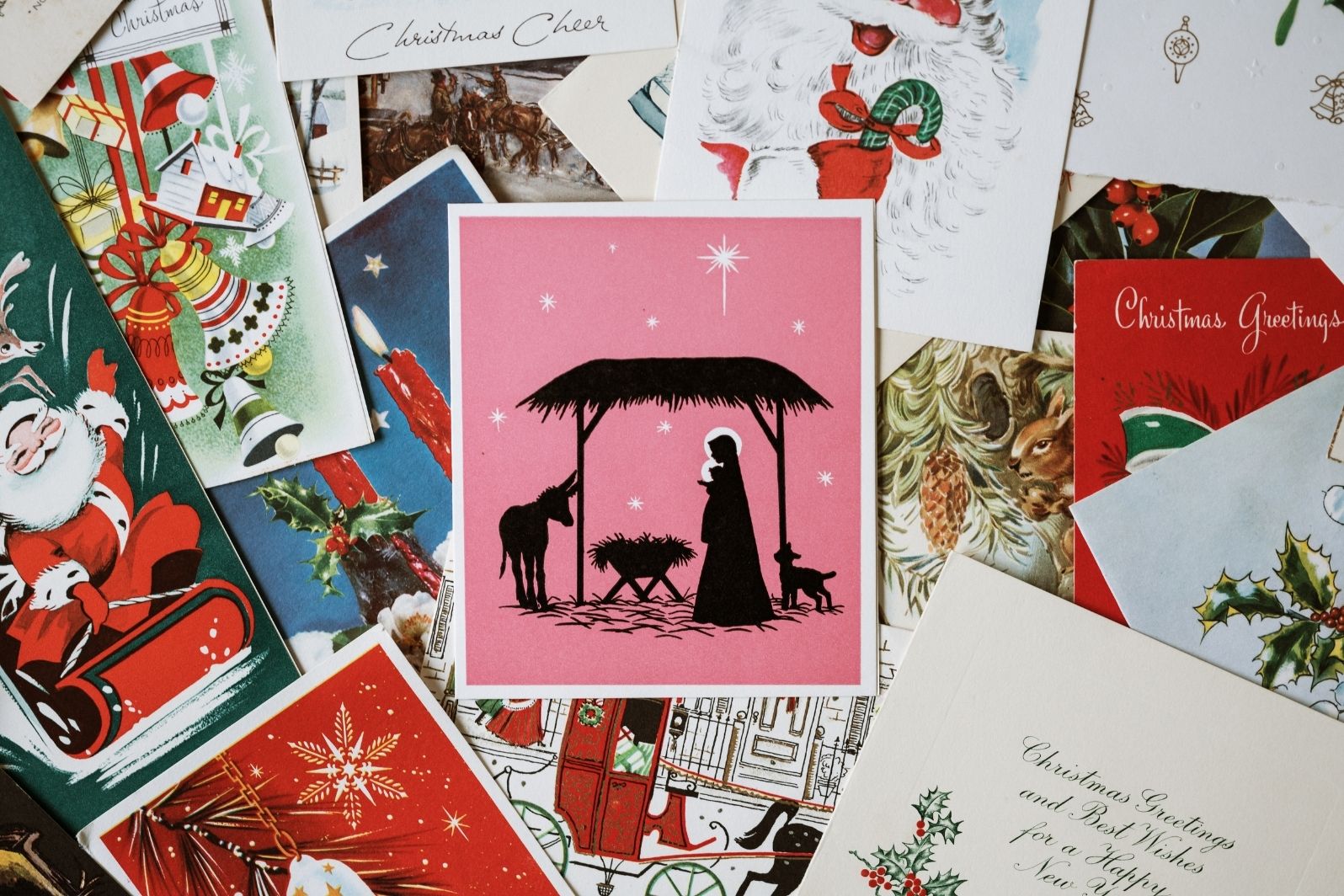The tradition of sending Christmas cards was first started in the UK by Sir Henry Cole in 1843. He was a civil servant who had helped set up what later became known as the Post Office. He wanted to find a way for the Post Office to be used by more ordinary people. Sir Henry and his artist friend John Horsley designed the first cards and they were sold for a shilling each. The design on the card featured three panels. Two outer panels showed people offering alms to the poor and the centre panel showed a family eating Christmas dinner. Only around one thousand of these cards were printed and sold.
The Penny Post.
The first postal service for the general public was started in 1840 with the introduction of the Penny Post. Prior to that, postal services only served the wealthy. The one penny postage stamp resulted from the development of the railways which were able to carry much more post than the established horse and carriage, and they could travel much further, much quicker and much cheaper. With improvements in printing methods from about 1860, Christmas cards were produced in greater numbers and increased in popularity. In 1870 sending cards became even more popular as they could now be posted for one halfpenny, half the cost of sending an ordinary letter. By this time more people than ever before started to buy Christmas cards and send them to loved ones far away.
The Custom Starts to Spread.
By the early 1900s, the custom of sending postcards had spread throughout Europe and especially Germany. The earliest cards featured Nativity scenes and in late Victorian times, snow scenes with the popular British bird, the robin, became popular. Christmas Cards first appeared in the USA in the late 1840s, but they didn’t become popular until 1875 when the printer Louis Prang started to mass produce them. The first known ‘individualised’ Christmas Card was sent in 1891 by Annie Oakley, the famous outlaw, and it featured a photo of her. Annie is reputed to have designed the cards herself and they were printed by a local printer in Scotland. The 1910s and 1920s saw the rise in popularity of homemade cards. They were often highly original and usually too delicate to send through the postal service. From this time Christmas Cards were often presented by hand.
Modern Developments on the Theme.
Nowadays, Christmas Cards can be embellished with all manner of images, text and other decorations. They can show winter scenes, Christmas or nativity images, romanticised historical scenes and even crude jokes. Charities often sell box sets of their own Christmas Cards to help raise money over the Christmas period.
Charities now also raise money by selling the small stickers used to seal envelopes which contain the cards. This idea started in Denmark in the early 1900s as a way for charities to raise extra money by making the cards more attractive. It became a great success and very soon Sweden and Norway adopted the custom before seeing it spread to Europe and later America.



